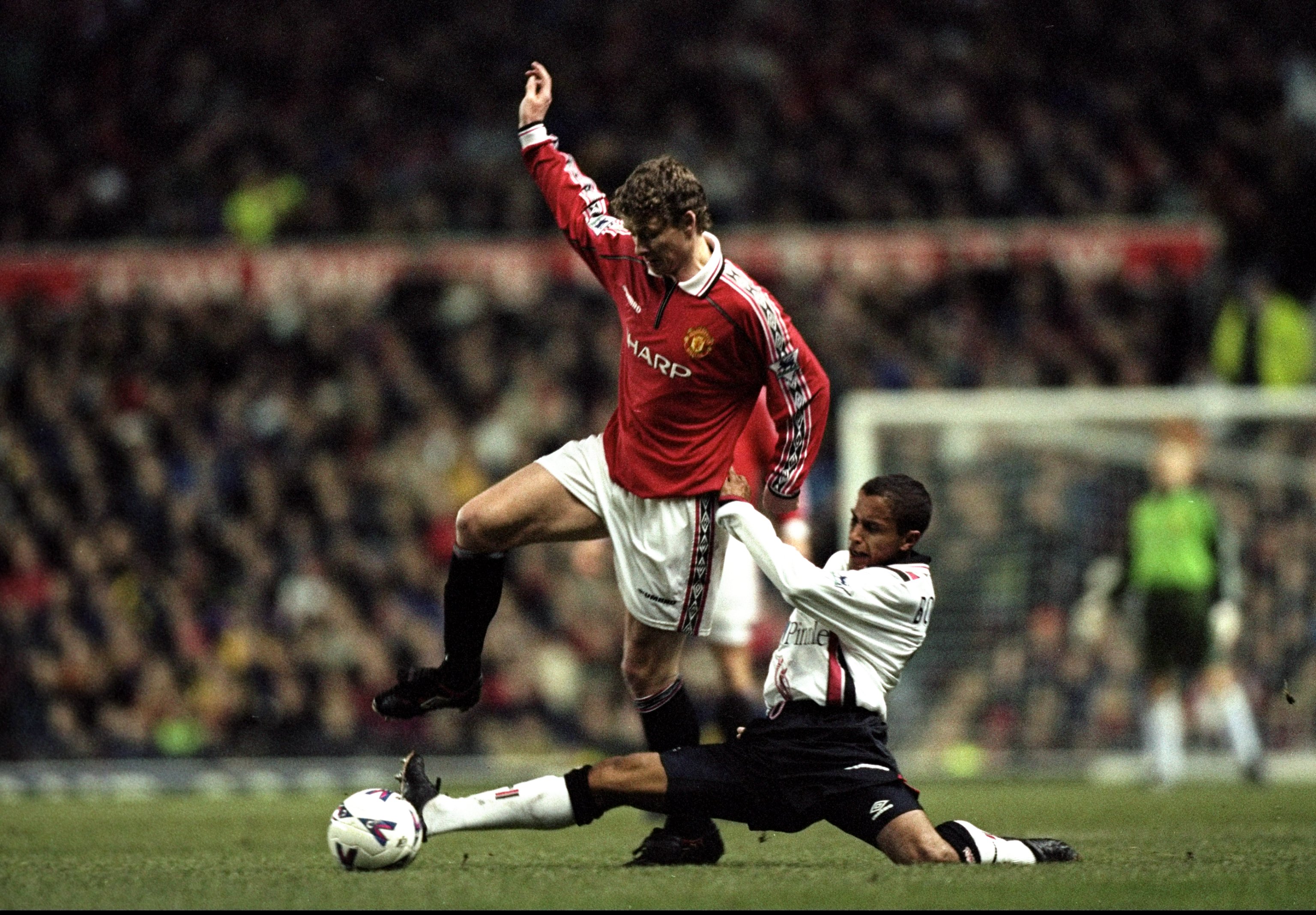
What's a channel then? And no, we're talking about TV.
There’s no ‘right’ or ‘correct’ way to win a football match. Although so-called purists might want to tell you differently, every tactic and strategy, whether defensive or attacking, has its own merits and place within our game. So why do so many of us naturally think it is better to have the ball and be on the front foot, as opposed to a more cautious approach?
It might be because there are some areas of the pitch, that even against the best sides, can prove very difficult to defend, no matter how organised you are. This area is the channel – and this is your tactical explainer from FourFourTwo, as we deliver a comprehensive masterclass on every football term you need in your vernacular.
What is the channel?
There two types of channels on the football pitch: vertical and horizontal. Vertical is probably the more well-known of the two, referring to the space in between the full-back and the central defender.
This is the area that an intelligent forward will always look to exploit – often with a blindside run. When playing against a traditional flat back four, the channel can be a potential goldmine.
In the clip above, the dark-red team's right-winger manages to exploit space between the white team's left-back and left-sided centre-back.
In this instance, both centre-back and full-back won’t know who should be picking up the opposition forward when drifting into that zone. It becomes a grey area, often leading to pointing and arguing when a goal is subsequently conceded.
There are also the horizontal channels, the lines that sit between the teams defence and midfield. As a general rule, these channels tend to be exploited more by a team who has an overload in midfield.
When it comes to horizontal channels, however, it's more often referred to as “getting between the lines”.
Which teams exploit the channel well?

The channel is often thought about as an extension of the half-space – the area between the wing and the centre of the pitch – but really, a channel doesn't have to be a designated area: it's simply a patch of the pitch exploitable. Most often, it's associated with attacking transitions.
Taking advantage of this space and hitting the ball into that ‘corridor of uncertainty’ links pretty much every team that plays a direct style of football, regardless of their formation or wider tactical set-up.
In particular, the great teams from down the years who had success employing a flexible 4-4-2 system often used this tactic. The formation may be seen as out of fashion when it comes to the modern game, but if you have hard-working wide midfielders and agile forwards, hitting the channel with a long ball can work a treat.
Manchester United’s 1999 Treble winners were a prime example. David Beckham and Ryan Giggs weren’t simply flying wingers looking to get to the byline: both were wide players who could step inside and play pinpoint passes down the channel. When you combine this with forwards who possessed the movement and game intelligence of a Dwight Yorke or Teddy Sheringham this was a lethal combination.
Two of United’s most famous goals that season came from exploiting space down the channel albeit, from their other two strikers in that talented frontline. Ole Gunnar Solskjaer’s late strike against Liverpool in the FA Cup third round and Andy Cole’s winner on the final day of the Premier League against Tottenham.
What are the pros and cons of exploiting the channel?

The channel isn’t just for teams that play direct football. Good possession-based sides will also look to take advantage of this area when playing against a deep low block, rather than send aimless crosses into the box.
One disadvantage emerging is related to the improved versatility of the best centre-backs in the world. At the top level, they are normally incredibly athletic and over 6ft 2in.
Generally, these defenders are far less vulnerable to chasing a tricky forward into the channel: go back a generation and most centre-halves, we were told, didn’t want to be turned towards their own goal and certainly don’t want to be chasing after forwards in wide areas. Fast forward to today and you have someone like Virgil Van Dijk: a player who would relish a one-on-one duel against anyone, anywhere on the pitch, at any time.
To an extent, attacking teams will always look to play down the channel, given that it is just such an effective tactic. Stylistically, football in 2024 may look very different to the game played 50 years ago – but this part of the pitch remains vital and probably will do in another 50 years.







